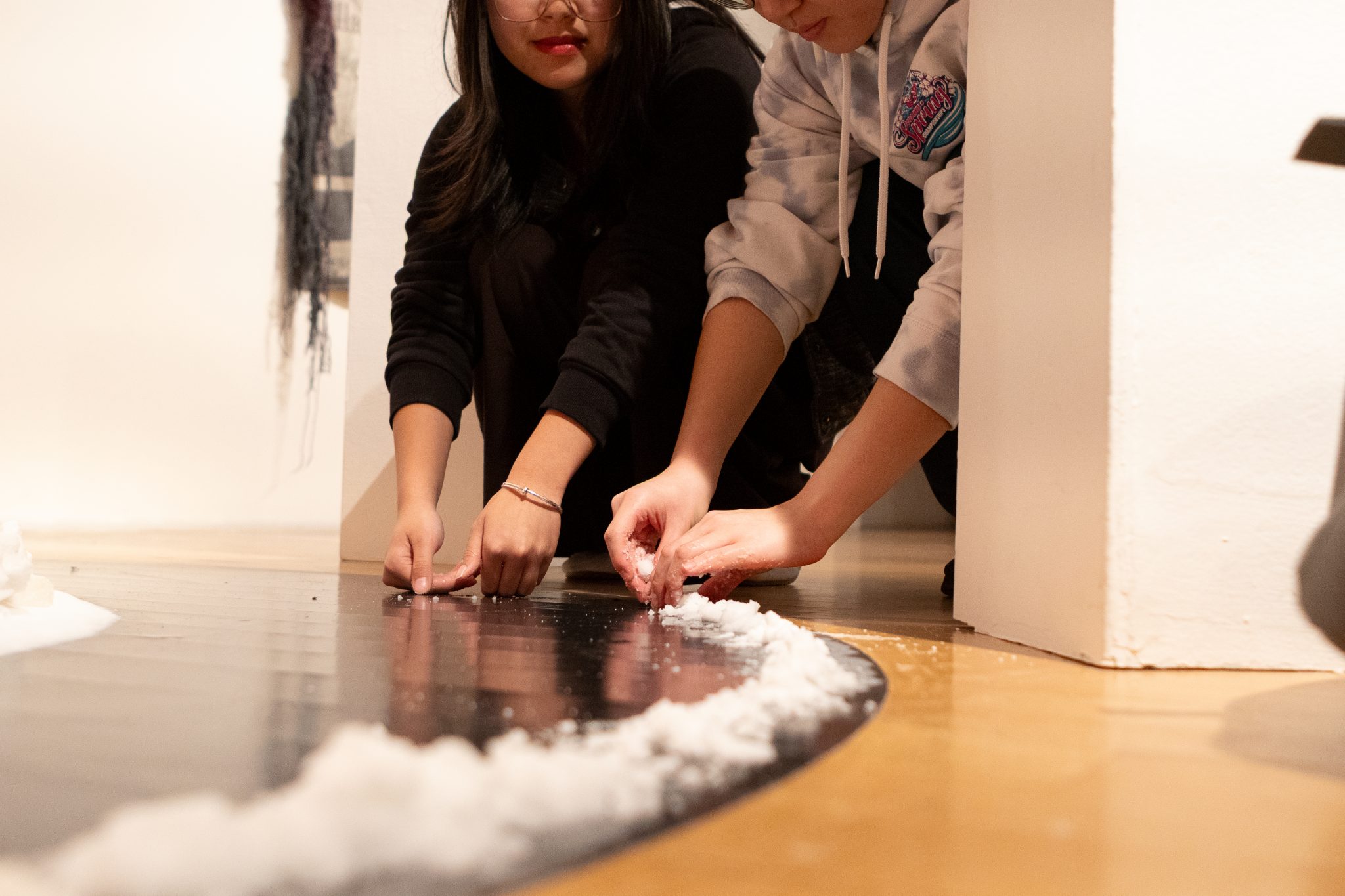By Charlotte Sutton
For The Diamondback
Content warning: This story contains mention of sexual violence and assault.
About 50 University of Maryland community members viewed a new Stamp Student Union gallery exhibit that highlights stories of sexual violence in an opening reception on Wednesday.
The exhibition, called “We Will Not Be Silent: Art Transforming Rape Culture,” encourages the use of art for social change and engaging in conversations about the issue of sexual violence.
The gallery, which officially opened for viewing on Oct. 30, displays work from artists dedicated to shedding light on experiences of sexual violence across the globe, with an emphasis on uplifting the stories of members of the LGBTQ+ community, people of color and people with disabilities.
Artist Jadelynn St Dre’s piece, “Protection,” used bones sculpted out of salt to highlight the connection between intergenerational trauma and sexual violence.
St Dre used bones to symbolize both what has been lost and the parts of humans that remain the longest. Attendees were invited to pour water over the bones and then use the crumbled salt remains to create a circle. She called the process a “tradition of protection.”
“How are we holding the stories of our ancestors?” St Dre said. “How are we holding our traumas and our stories, and how are we holding the people that are to come?”
[Purple Line to begin testing light-rail vehicles at UMD in January]
St Dre expressed how members of the LGBTQ+ community “have to be the architect of visions,” to convey their stories and voices to the world.
“If we can’t vision our future, then it’s much more difficult to manifest, right?” St Dre said.
The piece was paired with a cathartic and vulnerable performance from artist Eva Salazar, who walked through the gallery with clay painted on her body while releasing emotional breaths and cries to convey the harsh impact left on survivors of sexual violence.
Event curator and co-founder of art collective FORCE: Upsetting Rape Culture, Hannah Brancato, told The Diamondback about her desire to create a public space for survivors and highlight the different systemic contexts that shape sexual violence with the exhibition.
“There’s no one monolithic experience of being a survivor,” Brancato, an American Studies doctoral student at this university, said. “What every survivor needs is different, even though there’s this systemic context that affects everybody.”
The exhibition’s featured artists have all made contributions to FORCE’s Monument Quilt, the first memorial to sexual and intimate partner violence survivors. The now-archived quilt, most recently displayed in 2019 on the National Mall in Washington, D.C., used more than 3,000 blocks to display survivors’ stories and art. The blocks are now being placed in permanent collections across the world.
Manager for the Stamp Gallery and Studio A, Tara Youngborg, told The Diamondback that the quilt panels speak to a specific time in activism. The panels were made between 2013 and 2019, during the height of the MeToo movement.
“It sounds odd to call something that’s a decade old historical,” Youngborg said about the quilt panels. “They’re in relation with contemporary art … I think it’s interesting to see how the artists’ work and practice has evolved.”
Youngborg said she hopes the archival work resonates with students and the current conversations they have about sexual violence.
The exhibition’s emphasis on providing accessibility and content warnings aims to make all exhibition attendees feel comfortable learning and speaking about the issues presented.
[UMD alumni offer STEM students tips for job searching in a turbulent market]
The gallery manager shared how Salazar’s piece “To Have and To Hold” can provide comfort to viewers during intense feelings that the exhibit could bring.
Youngborg said this piece was made by artists holding pieces of clay and creating impressions as voids of Salazar’s body. She explained how gallery attendees were invited to “grab the object and figure out how [they] fit in relation to their body.”
“It’s very grounding, especially because this exhibition can be intense,” Youngborg said. “It gives folks a chance to feel really connected to the work.”
Communication graduate student Kalin Schultz said it was important that the gallery provided displays and resources to a college campus about a topic that often feels taboo to speak openly about. She noted the ways the gallery aimed to make viewers comfortable during the exhibit.
“They’ve got different reminders about how to engage. They’ve got spaces where you can rest,” Schultz said. “The fact that it’s so tailored towards finding ways to take care of yourself as well, I think it’s really important.”



